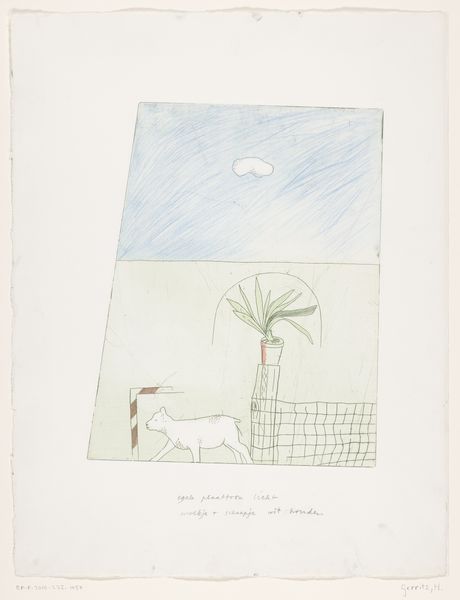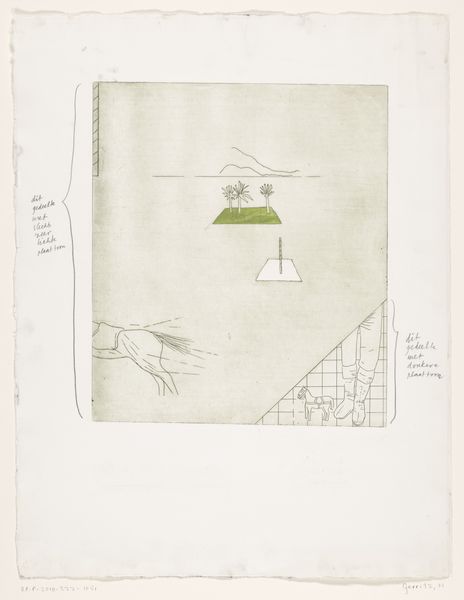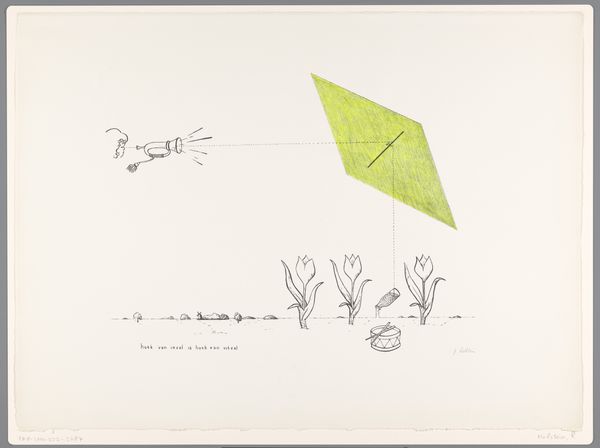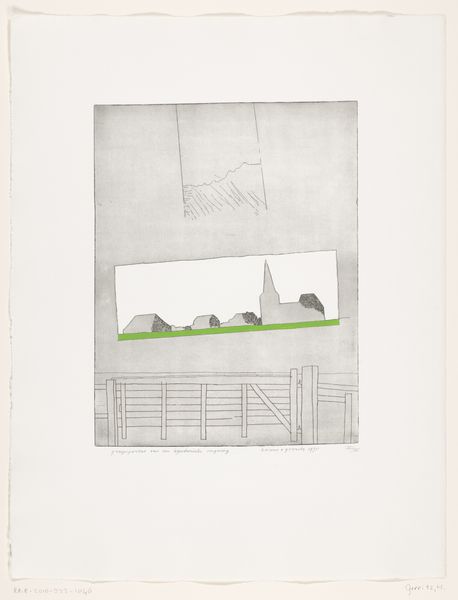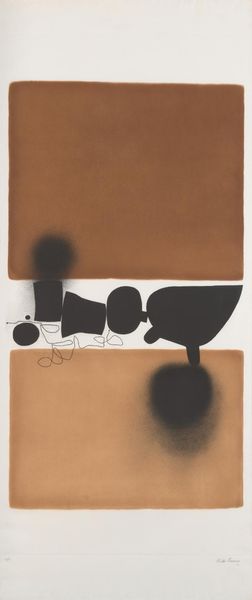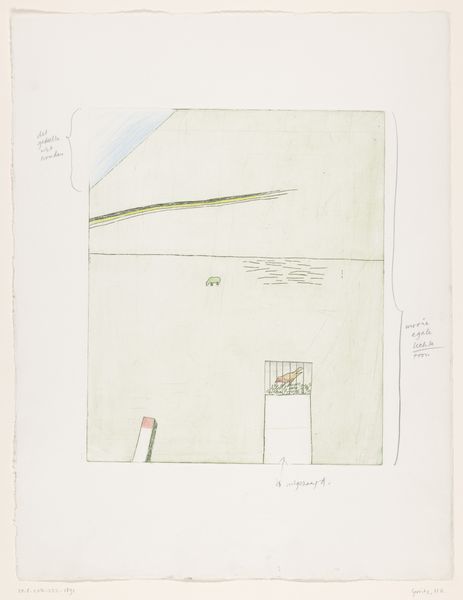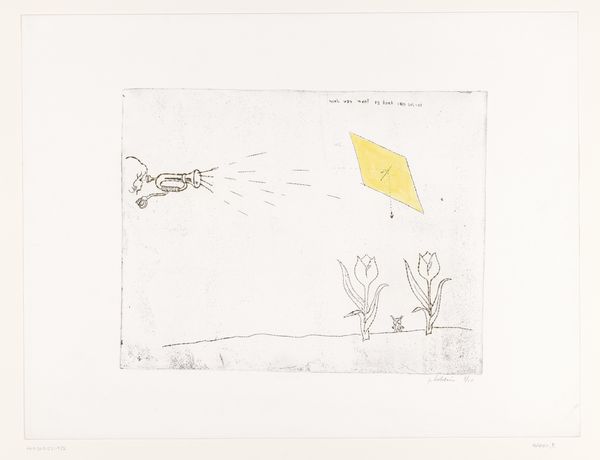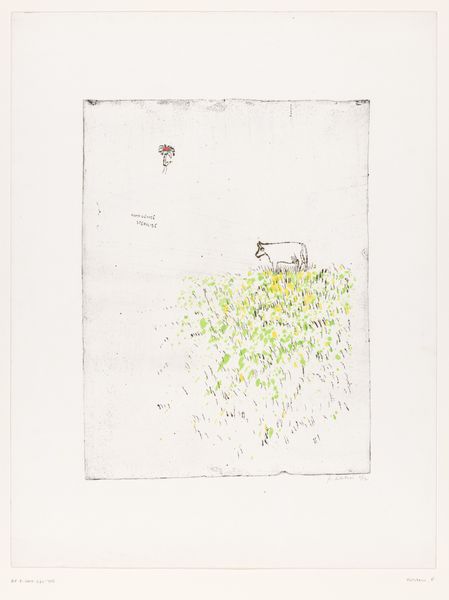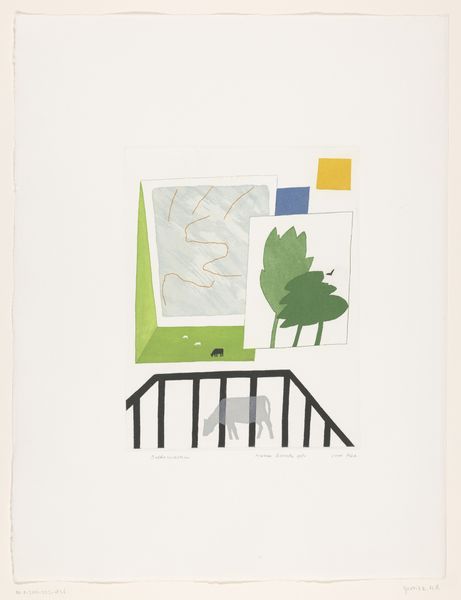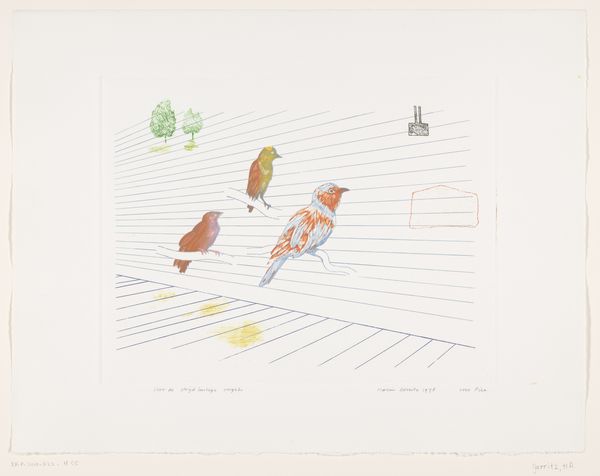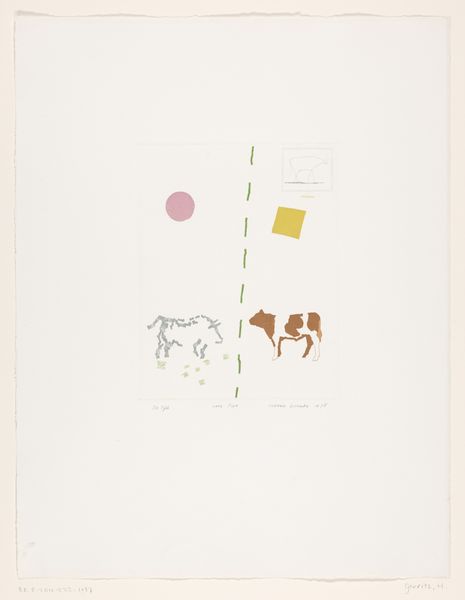
drawing, paper, ink
#
drawing
#
contemporary
#
paper
#
form
#
ink
#
line
Dimensions: height 518 mm, width 415 mm, height 413 mm, width 334 mm
Copyright: Rijks Museum: Open Domain
Curator: Welcome to the Rijksmuseum. We're standing before "Lam en kamerplant," created around 1975 by Harrie A. Gerritz. It's an ink drawing on paper, showcasing the artist’s distinct linear style. Editor: Immediately, the drawing's simplicity strikes me. It has a dreamlike quality, a tranquil world contained within these lines. It’s quite spare and minimalist, almost child-like, with that lamb just placed in this scene. Curator: Gerritz was quite interested in form, and his contemporary style, in this artwork, reveals a playfulness with space and perspective. Notice how the composition almost feels like a stage set – a backdrop of implied space and then our central players: lamb and potted plant. These are ordinary elements of the artist’s world, elevated. Editor: The lamb, particularly. It's positioned low, giving the viewer an unusual perspective, almost from the floor. Its spots and outlined shape contrast strongly with the geometric shape in the background, giving a certain degree of play. Curator: Yes, and consider how these seemingly unrelated images were put together—what is their relationship, the plant, the lamb? Gerritz presents us a fragment, and we are compelled to construct our narrative to fill the implied storyline of a shared place or moment in time. It’s worth remembering the socio-political backdrop; minimalist gestures were popular at the time as an assertion of value within quotidian forms and spaces. Editor: This reminds me of the concept of domesticity as resistance – particularly during that time. Taking these elements – lamb, which has symbolic resonance of innocence, and a potted plant—and placing them on the foreground calls attention to the way art and art making reifies everyday things and relationships that structure so many of our social and cultural lives. It speaks to the way that artists in the 1970s were reconfiguring symbolic forms to disrupt social expectation. Curator: Precisely. By rendering these ordinary objects extraordinary, he offers a subtle commentary on value, observation, and, as you said, disruption of societal norms within a changing art scene. Editor: In that light, seeing it presented here at the Rijksmuseum prompts us to rethink both what we consider "high" art and the narratives we use to create, critique and consume it. It forces the art and socio-political critique towards something much larger in scale. Curator: I agree. Its very intimacy becomes its power, inviting ongoing dialogues about both our individual stories and shared cultural memory. Editor: Yes, a quiet artwork that still has much to provoke.
Comments
No comments
Be the first to comment and join the conversation on the ultimate creative platform.
